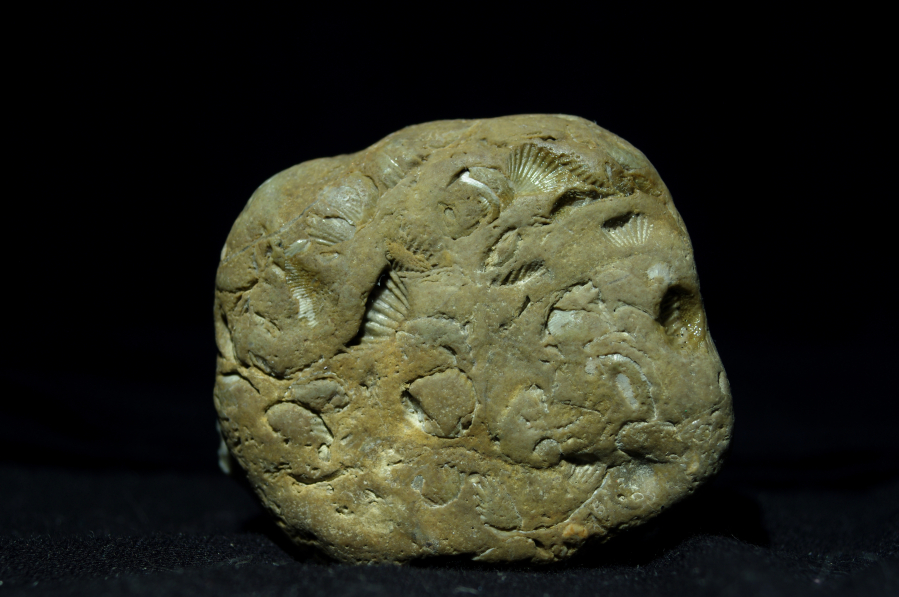Think dinosaurs didn’t mix things up at mealtime? Think again. Researchers studying fossilized dinosaur feces from about 75 million years ago have discovered that at least some plant-eating dinosaurs also snacked on shellfish.
The discovery of crustacean remains in the droppings, described in Scientific Reports, reveals that large herbivorous dinosaurs such as hadrosaurs may have had far more complex eating habits than we usually give them credit for.
“We need to refine our presumptions about dinosaur diets,” said lead author Karen Chin, a paleontologist at the University of Colorado in Boulder.
Scientists studying the creatures of the lost world, ultimately annihilated by an asteroid some 66 million years ago, typically look at the bones these animals left behind. But though bones reveal much about an animal’s shape, they reveal only so much about how an animal actually interacted with its environment — for example, how it fit into its ecosystem’s complex food web.
That’s why a dinosaur’s poo is a paleontologist’s precious stone. In the rare event that it happens to be deposited in the right environmental conditions to become a fossil (at which point it’s called a coprolite), it can reveal much about what a dinosaur was actually eating.
“Direct evidence for diet in the fossil record is very rare,” Chin said. “We are usually forced to rely simply on the bones, so we study the teeth and the jaw and other aspects of functional morphology. So when we find coprolites like these … they do provide a different perspective on the diet.”
Rotting wood
These particular coprolites were discovered in southern Utah at the Grand Staircase-Escalante National Monument’s Kaiparowits Formation. They were dark — a sign that they had been filled with rotting wood — and were marked by backfilled dung-beetle tunnels.
The researchers could tell that the wood had been rotting before the animals ate it because it was so fragmented. This meant that a tough polymer in the cell walls called lignin had been broken down. Animals have a tough time eating fresh wood because they can’t properly digest lignin — but fungi can, which allows animals to then access the wood’s complex sugars. That lignin-breakdown by fungi can only happen in the presence of oxygen — which means it couldn’t have happened inside the oxygen-poor environment of an animal’s gut.
Though it might seem weird that a plant-eater would eat rotting tree bits, it’s not totally out of the question, Chin said. Cattle in Chile are known to eat rotting logs on occasion, probably for the same reason. Similar wood-filled dinosaur dung had been found in Montana, too, about 1,000 miles or so away from the Utah site.
The really strange component of the dung was this: fragments of what appeared to be crustacean shell in 10 of the 15 specimens they studied. They’re not sure exactly what species these crustaceans might be, but the shell comes in tubular shapes reminiscent of appendages and flat, thin-layered structures that would have made up crustaceans’ cuticle, their hard outer layer.
One specimen full of crustacean bits could have been a fluke, but Chin and her colleagues found the shell-filled dung over three different levels of rock, which implies that this eating behavior persisted over time, perhaps very long periods of time.
The scientists say the plant-eating dinosaurs were probably hadrosaurs, large duck-billed dinosaurs that ate plants and thrived in the area. And with rows of teeth housed in their mouths, they would have been one of the few of their plant-eating peers that could chomp through wood and even cuticle, too.
Theorizing why
Why would these animals eat crustaceans? Chin’s hypothesis is this: Herbivores can’t rely on rotting wood year-round, because there wouldn’t be enough of it to go around. The rotting wood was probably an occasional meal. And she wondered whether the crustaceans may have been eaten along with the rotting wood during breeding season, when they’d need all the extra calcium and protein they could get to lay their eggs.
This idea might have a parallel in the behavior of some birds, which are dinosaurs’ only living descendants: Chin pointed out that some seed-eating birds look for insects when it comes time to lay eggs, probably seeking out the extra proteins and minerals.
If that’s the case for these dinosaurs, then their eating habits may have been far more complex than previously thought, Chin said.



